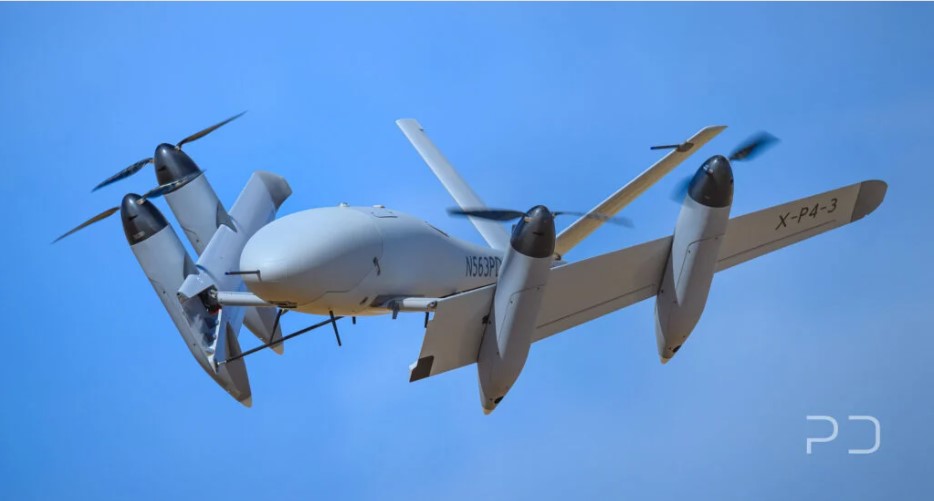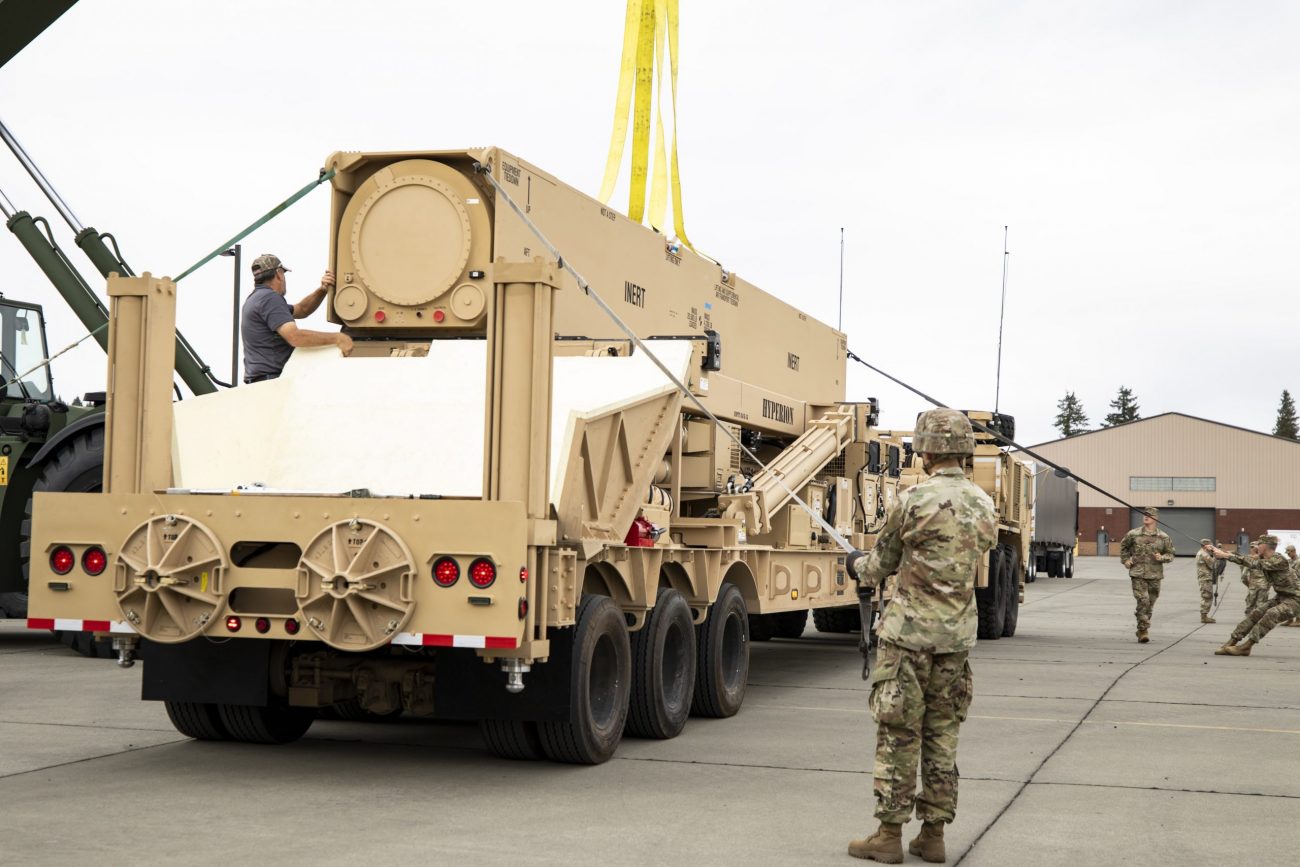China has reportedly tested a prototype of a morphing hypersonic vehicle capable of flying at speeds exceeding Mach 5 and changing shape in flight.
If accurate, it will mark a revolutionary leap in the design of hypersonic missiles that can not only fly at speeds exceeding Mach 5, but also maneuver in flight, further complicating their interception, and hit highly mobile targets, such as ships, aircraft carriers, and even stealth aircraft such as F-22 Raptor and F-35 Lightning II.
The missile features a pair of retractable wings. This groundbreaking design allows it to dynamically adapt its aerodynamic profile mid-flight, according to a peer-reviewed paper published in a Chinese journal.
While in flight, the wings can retract and fold inside the fuselage, thus minimizing drag during high-speed cruising. When extended, they generate additional lift and significantly improve manoeuvrability.
Furthermore, the degree of wing deployment and retraction can be finely adjusted to meet flight requirements. This enables real-time changes to the vehicle’s overall aerodynamic shape and flight characteristics, a capability long considered the “holy grail” and the “final frontier” of hypersonic flight.
The design was detailed in a paper published on October 20 in Acta Aeronautica et Astronautica Sinica, China’s leading aerospace journal, by a research team led by Professor Wang Peng from the College of Aerospace Science and Engineering at the National University of Defence Technology (NUDT), the South China Morning Post (SCMP) reported.

According to the paper, the ‘morphing’ hypersonic vehicle has successfully completed key hardware-in-the-loop (HIL) ground tests, a critical milestone that demonstrates the vehicle design is not just theoretical but viable for real-world applications.
“High-speed morphing vehicles represent a cutting-edge direction in next-generation aerospace platforms,” the authors wrote.
“By dynamically adjusting their structure during flight to adapt to varying aerodynamic conditions, these vehicles demonstrate exceptional adaptability across wide speed and altitude ranges, offering significant potential for multi-role missions and enhanced penetration capabilities.”
The authors said that the novel design, which allows in-flight shape-changing, offers significant advantages over traditional fixed-geometry high-speed vehicles.
“Compared to traditional fixed-geometry high-speed vehicles, morphing vehicles can optimise aerodynamic performance in response to complex flight environments, dramatically improving manoeuvrability and mission flexibility.”
The Many Challenges In Controlling Hypersonic Vehicles
Foldable and retractable wings have been used in aircraft and drones for a long time.
For instance, the Transwing technology uses an innovative folding-wing design that enables the aircraft to transition seamlessly from vertical takeoff to forward flight, combining the maneuverability of a multirotor with the increased efficiency and range of a fixed-wing platform.
Similarly, South Korea’s Flying Squirrel Drone (POSTECH) features controllable, silicone-based, foldable wings that mimic the flight of flying squirrels. The wings deploy to generate extra drag for sharp turns, rapid stops, and obstacle avoidance, improving trajectory tracking by 13% over wingless designs.

However, adapting these foldable wings for hypersonic vehicles flying at Mach 5+ poses a host of scientific challenges.
At Mach 5 and above, surface temperatures can exceed 2,000 degrees Celsius (3,632 Fahrenheit), triggering extreme physical and chemical changes in the airframe.
The shifting geometry generates significant uncertainty in aerodynamic models, requiring extraordinary computational power in real time to maintain a stable flight trajectory.
At the same time, hypersonic platforms operate under severe constraints, such as limited on-board power and tight payload space.
The on-board flight computers, while highly reliable and advanced, cannot match the processing power of ground-based systems.
While flying at hypersonic speeds, the onboard flight computers have to make complex decisions in split seconds, and any miscalculation can have devastating consequences for the missile.
Furthermore, the mechanical actuators moving the wings are subject to inherent lag. Even here, a split-second delay can destabilize flight and result in the loss of the hypersonic vehicle.
Considering these constraints and challenges, Wang’s team has demonstrated a revolutionary control algorithm specifically designed to overcome these barriers.
How Does The System Work?
According to the paper, Wang’s team’s design integrates high-order fully actuated system modelling, prescribed performance control, and super-twisting sliding mode control —a sophisticated fusion of techniques that achieves high precision and robustness while drastically reducing computational load.
In tests, the system achieved attitude tracking errors of less than 1 degree, with smooth, chatter-free actuator responses – validating its readiness for real-flight applications, the SCMP report said.
However, despite the success in hardware-in-the-loop (HIL) ground tests, significant modeling and engineering challenges remain.
For instance, the prototype image shared in the paper reveals visible gaps behind the foldable wings, to provide the retracting wings space to stow inside the missile body.
However, critics argue, this design raises questions about thermal sealing under extreme heat, structural integrity, and stealth performance.
US: Long Wait For Hypersonic Weapons
The US is the world’s leading military power. However, there is one critical area where the US is trailing not only its peer adversaries like Russia and China, but even novice upstarters like Iran and North Korea.
It is common knowledge that the United States has actively pursued the development of hypersonic weapons as a part of its conventional prompt global strike program since the early 2000s.
The Department of Defense (DoD) is developing multiple programs, though none have transitioned to operational service as of October 2025. The programs are primarily in the prototyping and testing phase.
The Pentagon’s FY2025 budget request for hypersonic research was US$6.9 billion, up from US$4.7 billion in FY2023. It was US$3.8 billion in fiscal year 2022.
The US is working on multiple programs simultaneously. Among them are: the Army’s Long-Range Hypersonic Weapon (LRHW), the US Navy’s Conventional Prompt Strike (CPS), and the US Air Force’s Hypersonic Attack Cruise Missile (HACM) program.
Additionally, the Defense Advanced Research Projects Agency (DARPA) supports programs such as the Hypersonic Air-breathing Weapon Concept (HAWC).
However, none of these programs has achieved operational status.
Though in August this year, the United States deployed its ‘Dark Eagle’ Long-Range Hypersonic Weapon (LRHW) during the Talisman Sabre military drills in Australia. This marked the first-ever overseas deployment of this sophisticated system and represented a major milestone for the Pentagon.

According to Maj. Gen. Frank Lozano, the U.S. Army’s first unit to receive hypersonic weapons, will get a battery’s worth of rounds by the end of 2025.
On the other hand, Russia has three operational hypersonic missiles: the Kinzhal, the Tsirkon, and the Avangard. Earlier in June, Russia also ordered the start of mass production of its fourth hypersonic missile, the Oreshnik.
Additionally, China is leading in the global race for hypersonic weapons. China possesses the “world’s leading hypersonic arsenal,” with systems like the DF-17 and YJ-21 (a sea-based hypersonic missile) capable of targeting U.S. bases in the Pacific.
Incidentally, even countries like Iran and North Korea are alleged to have operational hypersonic weapons.
During the 12-day war with Israel, Iran claimed to have used hypersonic missiles, such as Fattah-1.
However, Israeli and Western sources deny that true hypersonic missiles were used, stating the missiles were standard ballistic missiles with limited maneuverability.
Even if Iranian and North Korean hypersonic capabilities are doubted, there is no denying the fact that Russia and China are ahead of the US in hypersonic missile technology.
Now, with the latest test of ‘morphing’ hypersonic missiles, China has cemented its lead over the US in this crucial technology.
- Sumit Ahlawat has over a decade of experience in news media. He has worked with Press Trust of India, Times Now, Zee News, Economic Times, and Microsoft News. He holds a Master’s Degree in International Media and Modern History from the University of Sheffield, UK.
- VIEWS PERSONAL OF THE AUTHOR
- He can be reached at ahlawat.sumit85 (at) gmail.com




